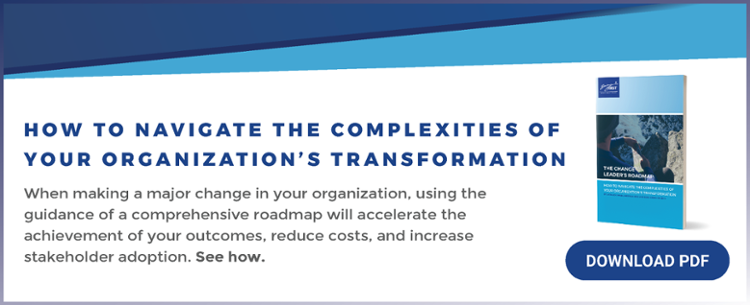Our brains are hardwired to resist change. When change (especially organizational change) is mentioned or introduced, it often triggers a fear response, which is why most of us are so darn resistant to our familiar world deviating from what we know, even by the smallest degree.
Neuroscience Impacts Organizational Change Efforts
Jacob Shriar explains: “As soon as something new happens, our brains automatically start trying to compare it with previous things we already know and are familiar with. This process of comparing the two actually uses up a lot of energy in the brain.”
This mental fatigue can then increase our fear. No wonder we groan and internally panic and want to ignore organizational change.
You can see why this intrinsic reaction and automatic and unconscious resistance presents challenges to organizational change. Imagine trying to corral a large number of people, all of whom have a hard-wired resistance to change, as well as different aspirations, motivation, levels of expertise and experience, learning styles, and personalities. No wonder building commitment to change is so challenging. But the challenges don’t stop there.
Common Reasons Organizational Change Fails
1. Poor Planning Sets Up Organizational Change for Failure
Often, leaders are so focused on getting their “content” solution designed that they dive right into the design phase of organizational change without adequately doing the upfront planning work required. This sets the effort up for failure right from the start. Instead, identify all the conditions and activities that must occur early to set the project up for success, like: 1) change roles, governance and decision-making, 2) stakeholder engagement strategy and communications, 3) timeline, resources and capacity, and 4) key initiatives and how to integrate them for maximum speed and efficiency. Without a well-designed change process plan, a likely outcome will be a false start, resistance, and/or eventual failure.
2. Inadequate Support from Leadership
Organizational change does not succeed without leadership support. And lip service is not enough. Leaders must champion and model the change for the rest of the organization, in both what they say and do. They must be active, consistently supporting the change teams as they design and implement changes. They must be out communicating the benefits of the change to stakeholders and listening to and responding to their concerns. If your leaders are not prepared to stay actively involved, perhaps it isn’t the right time for them to launch a major change effort. According to SHRM, change management experts suggest unsuccessful change initiatives often have executives who describe the desired outcome of the change project but do not instruct managers on how to implement it*.
3. Lack of Resources
Lack of resources is one of the most common reasons why organizational change fails in most organizations. Adoption and sustainment of change are long term investments. They don’t occur just because an awesome solution was designed. It has to get implemented, and then tested, refined, and reinforced. This generally is a longer, and costlier endeavor than most change leaders realize. If you don’t plan and resource the latter phases of change, you’ll not realize the full benefits you set out to achieve.
4. Priority Focus on Systems vs. People
Leaders often focus more on the system changes than the people that have to make and live with them. Don’t forget that while you need to have systems in place, it’s the people who matter most. “Sustained change is always driven by people,” says Lee Colan in his article “10 Reasons Change Efforts Fail.” “Even implementing new software successfully is more about the people who will use is, install it, train it, and support it than it is about the system itself.”
Be sure that your leaders equally prioritize and attend to the system changes AND the people.
5. Inadequate Change Leadership Skills
One could easily argue that this is the #1 cause of failed organizational change. Why? Because every issue or problem within a given change initiative either gets prevented, solved, or caused by the skill of the change leaders in charge. And the truth is, we don’t adequately train our leaders to become competent change leaders. Leadership development is a part of virtually all large organizations, but change leadership development is sorely missing. The net is that leaders tend to run change initiatives like they run their organizations, and the two are vastly different. Consider, where can your leaders go to get the development they need to become stellar change leaders?
Related eBook:
The Ten Key Strategies for Leading Transformation

Through 40 years of observing and supporting large-scale change and transformation in Fortune 500, government, global NGOs and public service organizations, we’ve identified these ten Best Practice strategies for leading transformation successfully.
Please complete the form to download your eBook:
Related Webinar:
Go Beyond Change Management: What it Takes



